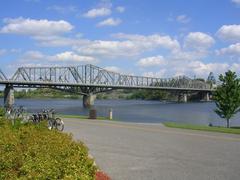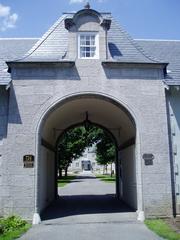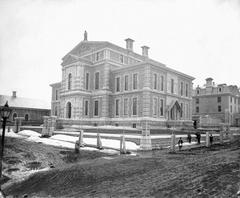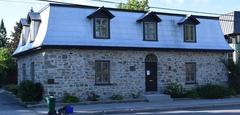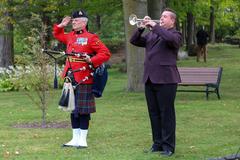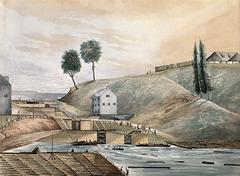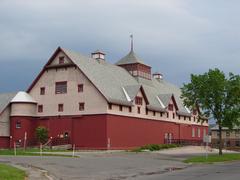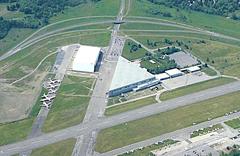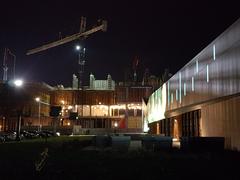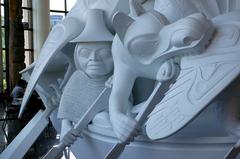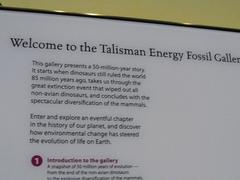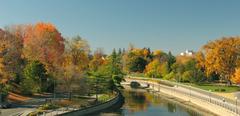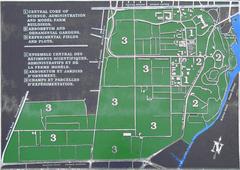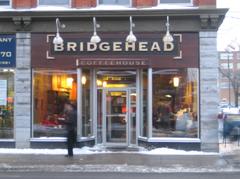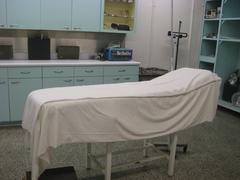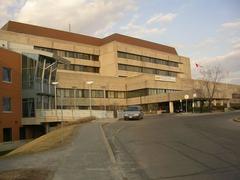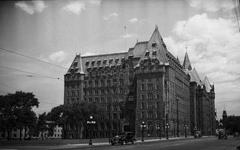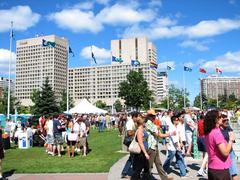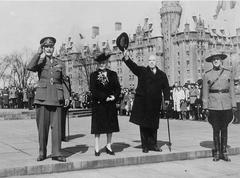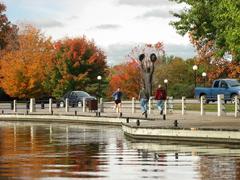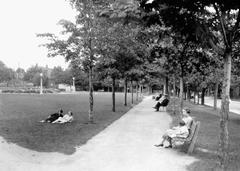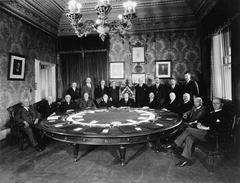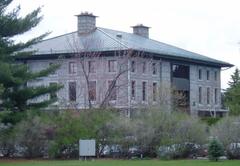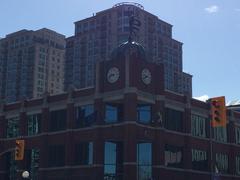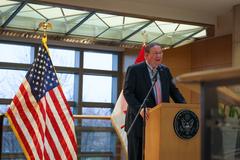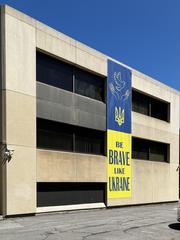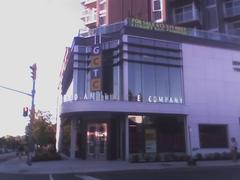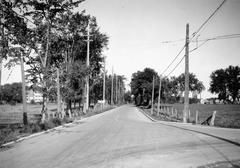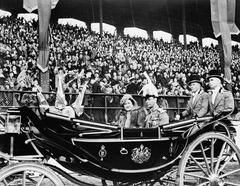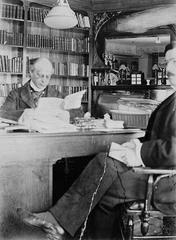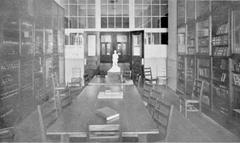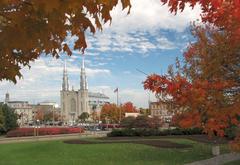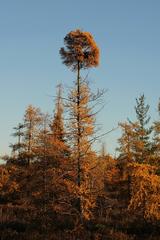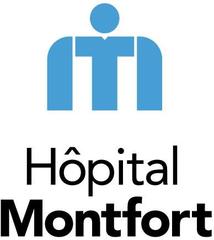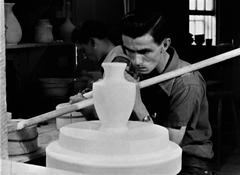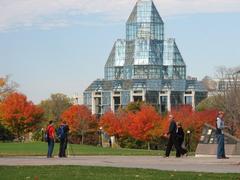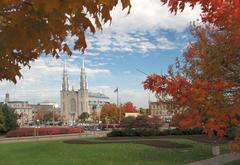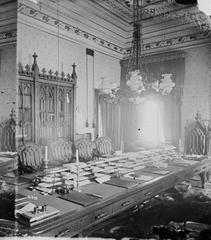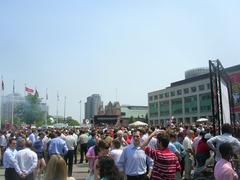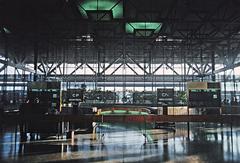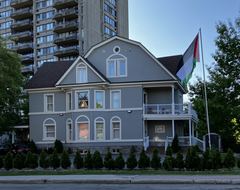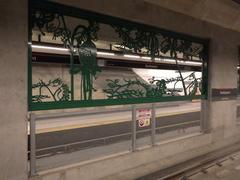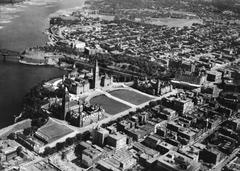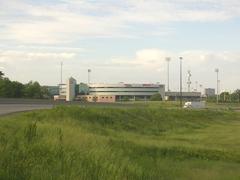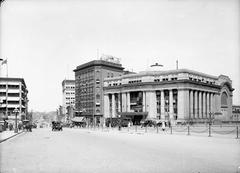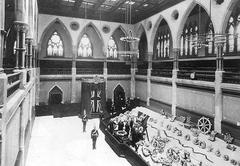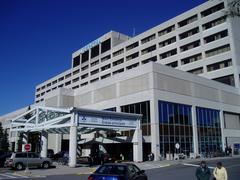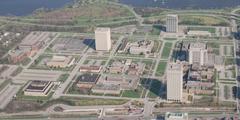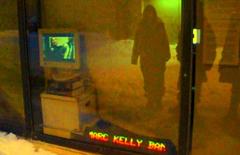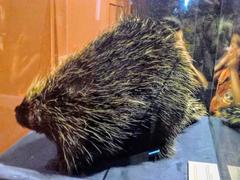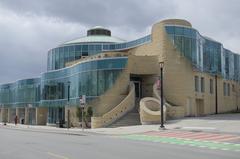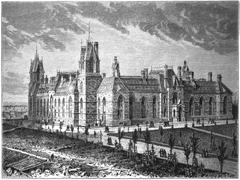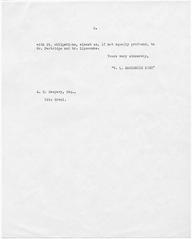
Dominion Observatory Ottawa: Visiting Hours, Tickets, and Historical Significance Guide
Date: 04/07/2025
Introduction
The Dominion Observatory, nestled within Ottawa’s Central Experimental Farm, stands as a monumental symbol of Canada’s early 20th-century scientific ambition and architectural heritage. Built between 1902 and 1905, it was conceived as the national center for precise timekeeping, geodetic surveying, and astronomical research—services that were critical to the nation’s infrastructure and its scientific standing on the world stage (Today in Ottawa’s History; Parks Canada).
Designed by Chief Dominion Architect David Ewart, the building’s Edwardian Baroque and Romanesque Revival style—with its red sandstone façade and verdigris copper dome—reflects both the grandeur and the scientific aspirations of its era (Wikipedia; Heritage Ottawa). Equipped with Canada’s largest telescope at the time, a 15-inch refractor, the observatory played a vital role in astronomical observation, national time distribution, and geophysical research, supporting railway operations and land surveying across the country (CASCA; Canada.ca).
Although its original functions ceased in 1970, the Dominion Observatory’s legacy endures as a symbol of Canadian scientific excellence and heritage. Now a designated National Historic Site, it draws visitors interested in astronomy, Canadian history, and architectural beauty. While public interior access is generally limited to special events such as Doors Open Ottawa, the grounds remain open year-round for exploration and reflection (CTV News; Doors Open Ontario).
This comprehensive guide details everything you need for a memorable visit—covering visiting hours, ticket information, accessibility, guided tours, nearby attractions, and practical travel tips—ensuring you make the most of your time at one of Ottawa’s premier historical sites.
Table of Contents
- Introduction
- Historical Overview
- Practical Visitor Information
- Visitor Experience
- Frequently Asked Questions (FAQ)
- Planning Tips
- Conclusion
- References
Historical Overview
Origins and Early Development
The Dominion Observatory’s story began in the late 19th century when Canada’s growing need for precise timekeeping and geographic measurement led to the creation of the Cliff Street Observatory. This early facility, built near the Ottawa River, handled time determination, longitude and latitude measurements, and calibration of survey instruments for explorers and government agencies (Today in Ottawa’s History; CASCA).
By the early 1900s, as Canada expanded westward and technological demands increased, the government authorized the construction of a larger, more advanced observatory—setting the foundation for what would become a national scientific landmark (Wikipedia).
Construction and Architectural Significance
Construction began in 1902 and concluded in 1905, with the observatory strategically located within the Central Experimental Farm to minimize interference from city lights and vibrations. The building’s red sandstone exterior, Romanesque arches, and iconic copper dome exemplify the Edwardian Baroque style favored in Canadian public architecture of the era (Heritage Ottawa; Parks Canada). The observatory was originally equipped with a 15-inch refractor telescope made by Warner & Swasey, at the time the largest in Canada (CASCA).
Key Figures and National Vision
The observatory’s establishment was driven by figures like Dr. Frederick King (first Dominion Astronomer and Director), Otto Klotz, and J.S. Plaskett. Their vision was to create a national observatory serving as the primary longitude reference point for Canada, distributing precise time signals to government, industry, and the expanding railway network (CASCA; Today in Ottawa’s History).
Scientific Contributions and Impact
Timekeeping and Surveying
The Dominion Observatory was Canada’s official source for standard time, sending telegraph (and later radio) signals across the country—a service vital for railways, communications, and commerce (Wikipedia). The observatory’s astronomers conducted geodetic surveys, providing crucial data for mapping boundaries, supporting the Geological Survey of Canada and other agencies (CASCA).
Astronomical and Geophysical Research
The observatory enabled advanced astronomical research—charting stellar positions, studying double stars, and supporting international collaborations. It also became a hub for geophysical research, including seismology and gravity studies, furthering Canada’s understanding of its physical environment (Canada.ca).
Later Years and Heritage Status
As atomic clocks and satellite navigation emerged, the observatory’s original roles diminished. In 1970, it ceased scientific operations, but the building and its legacy have been preserved. In 2025, the Dominion Observatory was officially designated a National Historic Site, acknowledging its pivotal place in Canadian science and architecture (CTV News).
Practical Visitor Information
Location and Setting
- Address: 1 Observatory Crescent, Ottawa, ON K1A 0C6 (sometimes referenced as 1000 Carling Avenue), within the Central Experimental Farm (Chamber of Commerce).
- The observatory is surrounded by mature trees and lawns, with nearby attractions including the Canada Agriculture and Food Museum and the Central Experimental Farm Arboretum.
Visiting Hours
- Grounds: Open year-round during daylight hours for exterior exploration and photography.
- Interior: Not open to the public on a regular basis due to its use by Natural Resources Canada. Interior access is available only during special events, such as Doors Open Ottawa, typically held in early June. During these events, hours are usually 10:00 a.m. to 4:00 p.m.
Tickets and Admission
- Grounds: No admission fee or tickets required for exterior access.
- Special Events: Interior tours during Doors Open Ottawa and similar events are free, but advance registration may be required due to limited capacity (Doors Open Ontario).
Accessibility
- The grounds are generally accessible, with paved paths suitable for wheelchairs and strollers.
- The building’s historic entrance is elevated, and interior access may be limited for those with mobility challenges during special events. For current details, consult the Doors Open Ontario website or event organizers.
Guided Tours and Special Events
- Guided tours are offered during special events like Doors Open Ottawa, providing insights into the observatory’s architecture, history, and scientific contributions.
- The Royal Astronomical Society of Canada (RASC) Ottawa Centre also organizes occasional public stargazing nights and educational programs (RASC Ottawa).
Directions and Parking
- By Car: Free parking is available in the Central Experimental Farm area, though spaces may fill quickly during events.
- By Public Transit: OC Transpo buses serve Carling Avenue, with stops within walking distance (OC Transpo).
- By Bicycle/On Foot: Scenic bike and walking paths lead directly to the observatory.
Amenities and Facilities
- No public restrooms or food services at the observatory. Nearby museums and Experimental Farm facilities offer amenities such as restrooms, cafés, and picnic areas. Plan accordingly for comfort, especially with children.
Visitor Experience
What to See and Do
Exterior Exploration
- Admire the Romanesque Revival architecture, copper dome, and tranquil setting.
- Interpretive signage provides historical context and information about the observatory’s scientific legacy.
- The site is ideal for photography, particularly at sunrise and sunset (Ottawa Life Magazine).
Interior Access (Special Events)
- During Doors Open Ottawa, visitors can explore the main dome, view historical exhibits, and enjoy panoramic views from the rooftop.
- Temporary exhibits feature astronomical instruments, archival photographs, and information panels.
Stargazing
- While the original telescope has been relocated, the observatory grounds remain popular with amateur astronomers and stargazing groups.
- Local clubs occasionally organize informal gatherings for celestial events; check astronomy group calendars for updates.
Nearby Attractions
- Canada Agriculture and Food Museum: Family-friendly interactive exhibits.
- Central Experimental Farm Arboretum: Beautiful gardens and heritage trees.
- Other Ottawa Historical Sites: Combine your visit with other nearby landmarks for a full day of cultural exploration.
Photography and Night Visits
- The observatory’s distinctive architecture and quiet surroundings are a favorite among photographers.
- For night visits and stargazing, bring a flashlight and be mindful of wildlife.
Frequently Asked Questions (FAQ)
Q: What are the Dominion Observatory’s visiting hours?
A: The grounds are accessible year-round during daylight. Interior access is limited to scheduled events like Doors Open Ottawa, usually held in early June.
Q: Is there an admission fee or are tickets required?
A: No tickets or fees are required for exterior access. Interior tours during special events are free but may require advance registration.
Q: Are guided tours available?
A: Guided tours are offered only during special events.
Q: Is the site accessible for wheelchair users?
A: The grounds are accessible; interior access can be limited. Check with event organizers for details.
Q: Can I visit outside Doors Open Ottawa?
A: Only the grounds are accessible outside of special events.
Q: Is parking available?
A: Yes, parking is available at the Central Experimental Farm.
Q: Can I take photographs?
A: Photography is permitted outside and during special event tours.
Planning Tips
- Visit during late spring to early fall for the best weather and scenery.
- Register early for special events to ensure your spot.
- Combine your visit with other attractions at the Experimental Farm.
- Respect the site—follow posted signs, stay on designated paths, and avoid disturbing staff.
- Check the Doors Open Ottawa website or official resources for event details and accessibility information.
Conclusion
The Dominion Observatory offers a unique window into Canada’s scientific and architectural heritage, making it a must-visit for anyone exploring Ottawa’s historical sites. With its rich history, striking architecture, and tranquil setting, the observatory provides a meaningful experience for history buffs, astronomy enthusiasts, and curious travelers alike. While interior access is limited, the grounds are open year-round, and special events provide rare opportunities to delve deeper into this national treasure.
For up-to-date information on visiting hours, events, and guided tours, consult official sources and download the Audiala app for curated guides and insider tips on Ottawa’s heritage sites.
References
- Today in Ottawa’s History
- Wikipedia
- Parks Canada
- Canada.ca
- CTV News
- Doors Open Ontario
- RASC Ottawa
- Chamber of Commerce
- Astro-Canada
- Ottawa Central Experimental Farm
- Global Heroes




